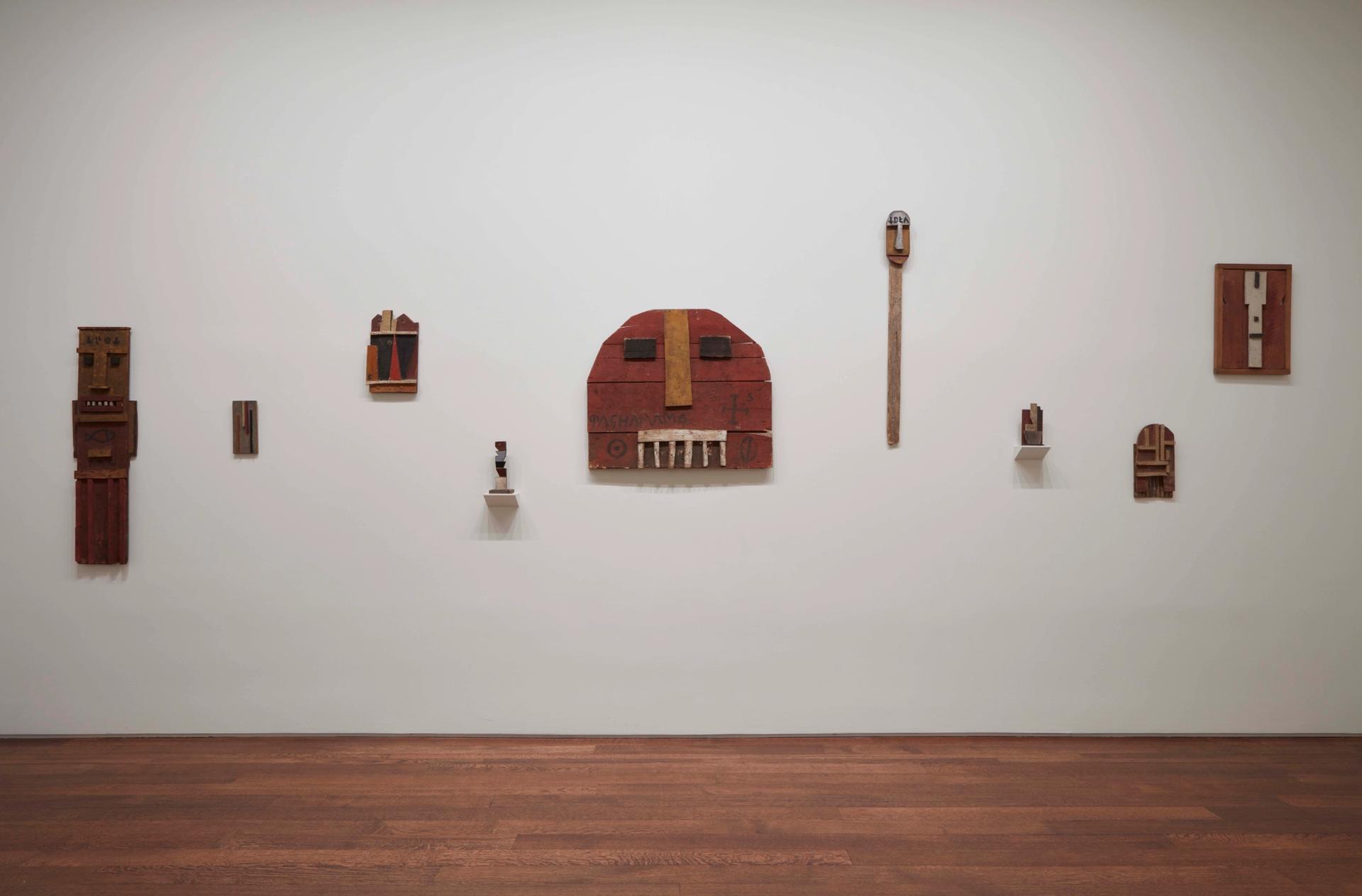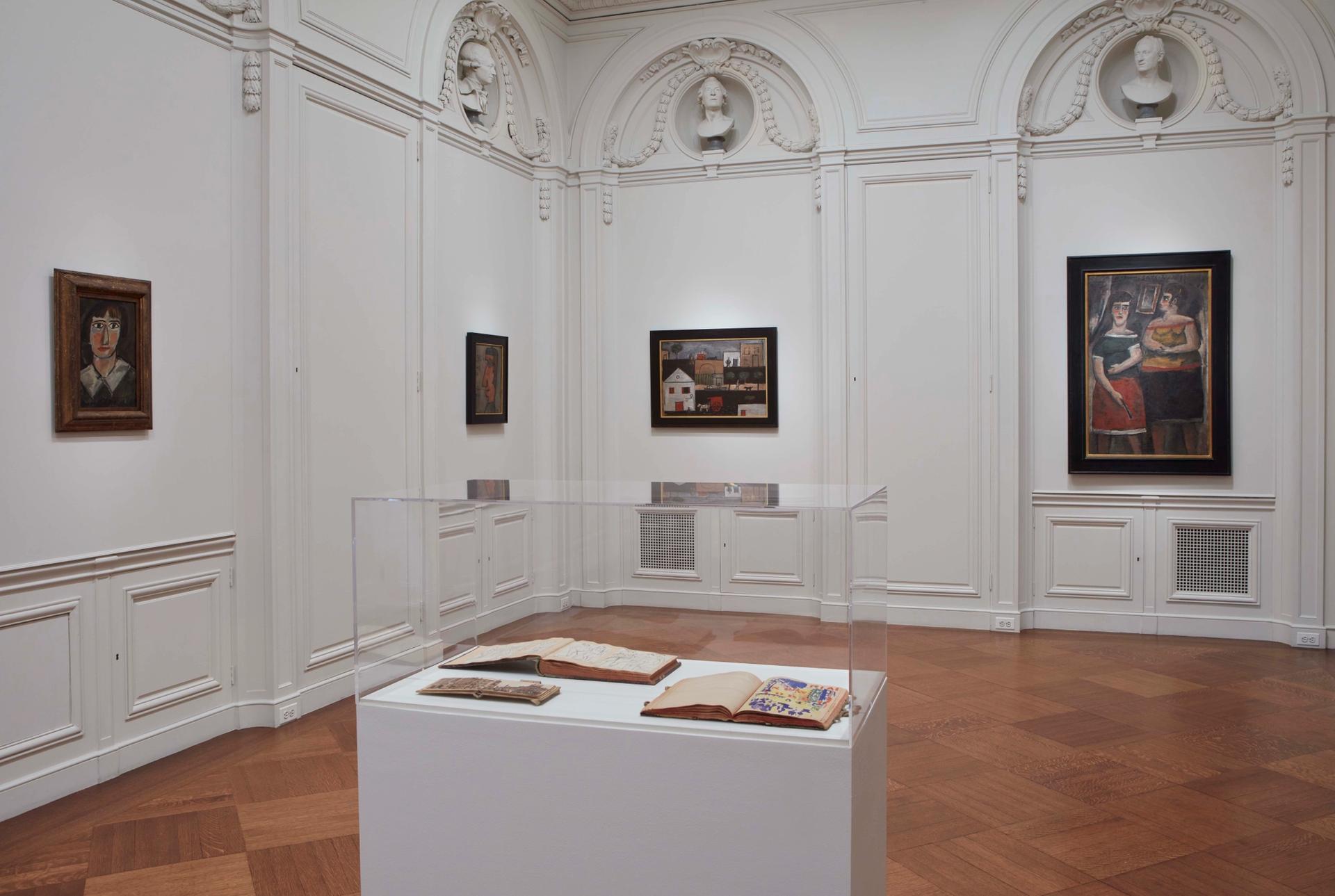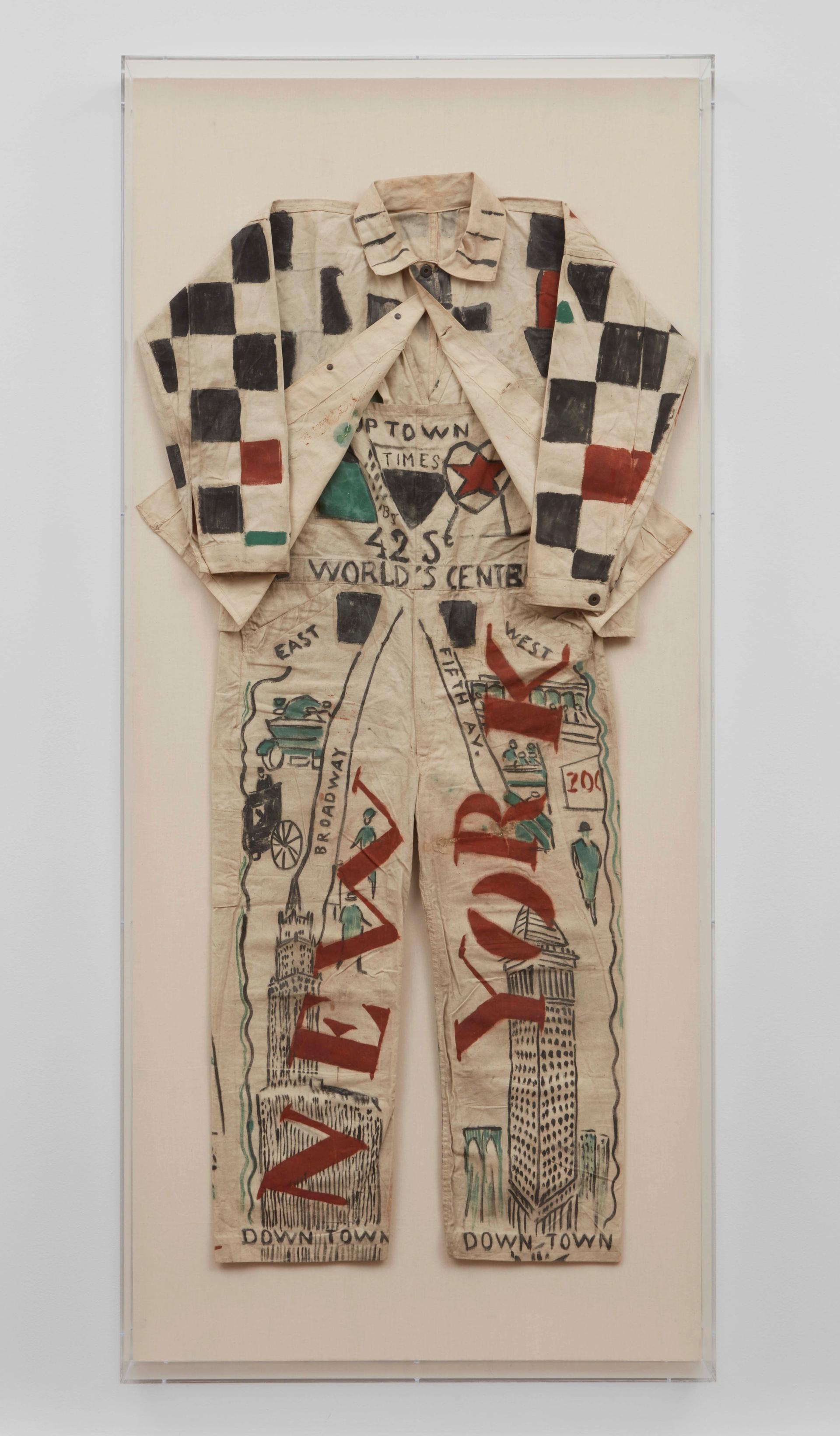Two comments stand out in the Modernist artist Joaquín Torres-García’s 1922 illuminated diary Dessins (Drawings). “One thing that I know,” he discloses in handwritten French, “is an ethnographic museum interests me more than a museum of painting.” Then: “The man of cathedrals has passed, man today constructs machines.” More than a decade later, after a late-career return to his natal Montevideo, Uruguay, Torres-García fully combined these two ideas—the mythic in ethnography and the rational in the machine—in his theory of “universalismo constructivo” (constructive universalism or universal constructivism), which he spread after his 1934 arrival with lectures, publications, radio broadcasts, and an artistic circle and workshop. Out of this theory, he (and his followers) produced drawings, paintings and sculptures partitioned by a mathematically derived—but not quite rationalist—architectonic grid, often arrayed with language and iconography that referred to Mesoamerican cosmology.

Installation View of The Worlds of Joaquín Torres-García at Acquavella Galleries, New York Photo: Kent Pell
Torres-García was not the only Modernist to mine the Mesoamerican past in Latin America, but he was no rude primitivist. By 1938, he spoke of a new, “creolised” culture—neither properly “indigenous” nor European—that was to be developed out of the unique historical conditions of the Americas. Perhaps his own peripatetic past had tuned him to the factious in identity’s facture: when he returned to the continent of his birth, it was after a lifetime of migration that saw the artist take part in Modernist demimondes in Catalonia, Spain, where his family moved at the end of his youth and where he came of age as an artist; New York, where he showed at the Whitney Studio Club in 1921; and Paris, where he was a founding member of the group of abstract artists Cercle et Carré (Circle and Square). This spread of Torres-García’s eclectic worldliness, from 1896 to his death in 1949, is now on view at Acquavella Galleries in the exhibition The Worlds of Joaquín Torres-García (until 29 June). Drawn largely from one branch of the artist’s family, the material on view is being shown as a comprehensive whole for the first time, though portions have been loaned to museums over the years—not including, due to complex family dynamics, the Museum of Modern Art’s 2015-16 retrospective.

Installation View of The Worlds of Joaquín Torres-García at Acquavella Galleries, New York Photo: Kent Pell
The present uptown mini-survey, moving chronologically across four galleries on two floors of Acquavella’s townhouse, is a treasury for all comers, serving as both a sampler introduction for the uninitiated and a case study for those interested in how the “globalisation” of the historical Modernist canon has unfolded in critical and curatorial history. (The catalogue, with a particularly illuminating essay on Torres-García’s reception in New York by Abigail McEwen, among others, is the exhibition’s lavish annex.) The gallery bills this as “the largest and most comprehensive survey in an American gallery since Joaquín Torres-García curated his own exhibition at The Sidney Janis Gallery in 1950”. While this is technically true, the claim invites two clarifying points: Torres-García is not and has never been a victim of curatorial neglect, in the US or elsewhere, and his self-organised exhibition (he died just before it opened, in 1949) was not comprehensive. Despite the tenuous exceptionalism that frames it, it is the word “comprehensive” that most concretely summarises the Acquavella exhibition, and in this way it speaks against those who might reductively “Latin Americanise” the artist (a tendency Torres-García himself literally turned on its head in one of his best-known works, Inverted Map of South America).
Two notable works in the exhibition—preceding the late universal constructivist style of the 1930s and 40s that he showed at Sidney Janis—might underline this point. One is a 1914 watercolour study for a Neo-Classical mural at the Saint George’s Hall in the Palace of the Regional Government of Catalonia, with its gridded pencil undermarkings an early suggestion of the artist’s foregrounding of the grid decades later. What is more, though Torres-García executed a number of known murals and frescoes for Catalan government buildings during this period, this study is not included in his catalogue raisonné (which is, to be fair, an online work-in-progress).

Joaquín Torres-García, New York Suit (1920), oil on cloth overalls Alejandra, Aurelio and Claudio Torres, Sucesion Joaquín Torres-García, Montevideo
The second is a pair of artist’s overalls illustrated with the funky New York grid: Broadway and Fifth Avenue are pectoral vectors, shooting down respective pant legs hemmed by his rendering of the Woolworth and Bankers Trust buildings. Known as the New York Suit, it was Torres-García’s costume for a March 1921 Society of Independent Artists’ party. Though represented in the raisonné with archival photographs and unknown dimensions, here its presence provides a totem for the artist’s body, as though to prime the exhibition geographically, to ground it on its ground floor. “New York is my city,” Torres-García declared in 1921, and so it is again—among many others.


![Joaquín Torres-García, Arte constructive universal [Universal Constructive Art] (1942) Alejandra, Aurelio and Claudio Torres, Sucesion Joaquín Torres-García, Montevideo](https://cdn.sanity.io/images/cxgd3urn/production/24c4b733c6d2f17764f18f8e464e14a39eb6ddbc-5624x5894.jpg?rect=1,0,5622,5894&w=1200&h=1258&fit=crop&auto=format)